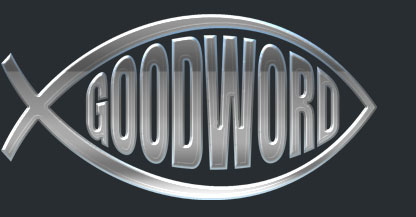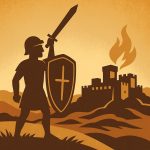| Host: | Brant Berglin |
|---|---|
| Guests: | James Ash |
| Quarter: | Allusions, Images, Symbols |
| Lesson: | 11 |
| Sabbath: | June 14th, 2025 |
Opening Question
What value do you find hearing ancient stories?
Introduction
This lesson focuses on two small books: Ruth (4 chapters) and Esther (10 chapters). These stories have been told in Christian and Jewish circles with much respect for these faithful women, holding them up as beautiful exemplars. The stories contain some surprises when read beyond the children’s books, but these only make the stories more complex and dramatic. I highly recommend reading through both books in their entirety, rather than reading a section here or there. We will find, as the quarterly addresses, that these stories have a future-focus as well.
Ruth
Read through the book of Ruth—it’s only four chapters, it should take you less than ½ hour. Because it is a story, we should examine it using narrative tools! Consider the narrative setting, the characters, the plot, and the complications to the plot. Look for props used to advance the story
Setting: When did this story take place? What is the geographical setting, and what is the condition of the land? What cultural aspects complicate the story (what do we know historically about Moab, for instance, and its relationship to Israel)? What is God’s role as character, if at all?
Characters: Who are the heroes or protagonists? Who are the antagonists? What are the actions they perform that tell you about their character, their motives, and quality?
Plot: What is the overarching plot? How is it complicated or made more difficult to complete? How is it resolved?
The story can be broken up into several “acts” where the first (ch. 1) describes the setting and the challenges facing these women, neither with a husband, no way to have land, and no future because their family options were cut off. The second act (ch. 2) introduces Boaz and develops his attention to Ruth; there is certainly interest beyond just familial obligation! Ch. 3, the 3rd act, takes place at the threshing floor at night. It is some what scandalous in the original Hebrew, but ends with Boaz making a promise to Ruth that He will take care of her and Naomi, unless someone else is a closer relative. Act 4 reveals someone else is closer; Boaz and Ruth may be separated! But in the end, Boaz redeems her, makes her his wife, and the book ends with a genealogy. Ruth becomes the ancestor of King David!
In what ways do you find Ruth’s story to parallel ours today? The quarterly makes several helpful connections, too! How has Jesus become a redeemer for us in our sinful condition?
Esther
Esther’s story is considerably longer than Ruth’s, but perhaps attempt reading the book in a sitting. Plan for an hour or more for this task. Once again, ask the narrative-type questions.
Setting: When did this story take place? Where is the story placed, and what other Biblical stories might be related to this one? How does the religious/cultural setting affect Esther’s choices and opportunities?
Characters: What can we learn of the characters from their actions? How would you describe them? Unlike Ruth, the main characters assume more heroic or evil roles. Also, one character is missing in this narrative—God! His name is never mentioned, yet what role do you think He might play in the narrative?
Plot: Again, what is the overarching plot? How is it complicated or made more difficult to complete? How is it resolved?
Ruth and her cousin shine brightly in this story, courageous in spite of their foreign status, and fears of retribution. Mordecai’s actions show him to be a man of honor and conviction. Questions might be asked about the morality of Esther’s night with the king and subsequent placement in the harem. Yet it appears she may have had little choice in the matter, and now is placed in a unique position for her people due to her royal status. Haman is the epitome of evil, seeking destruction of all Jews. Only when Esther enters seeking to save her people is the plot resolved!
What time of trouble do God’s people go through in this narrative? How is it resolved?
How is Esther a type of Christ? What does the intercession of Esther and Jesus achieve for the people of God? How is the Persian king like and unlike God the Father?
Closing Comments
These are more than merely interesting stories of God’s providence in the past; they become encouraging foreshadows of the future, of Christ’s intercession and redemption for us! God has not only been active in the past, but has made sure to carefully record these stories for us, on whom the ends of the world have come.




